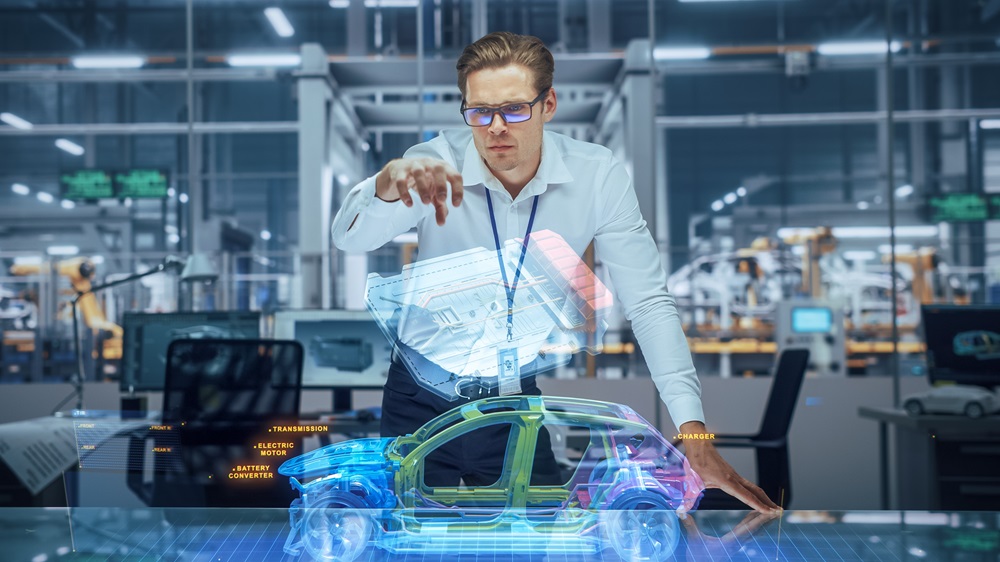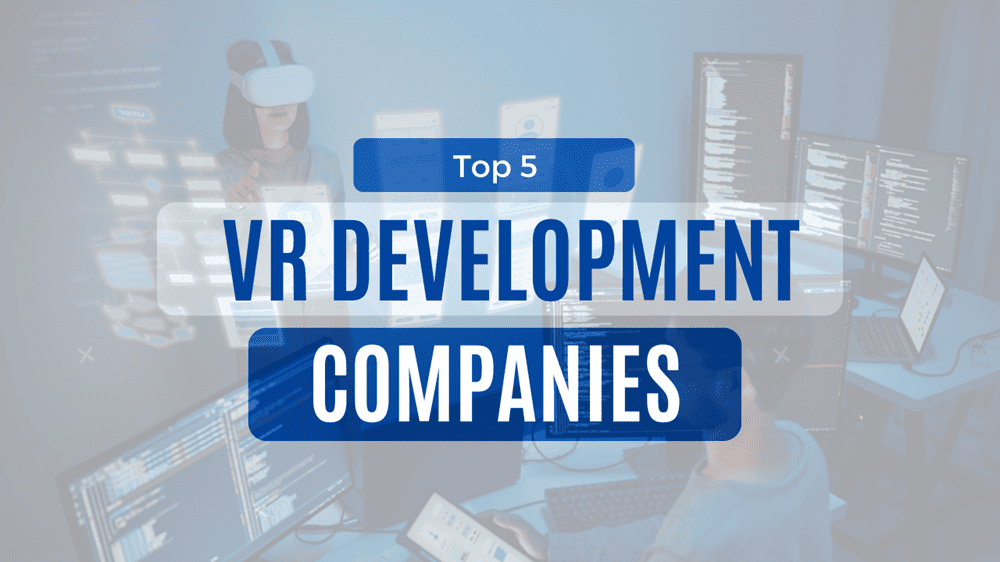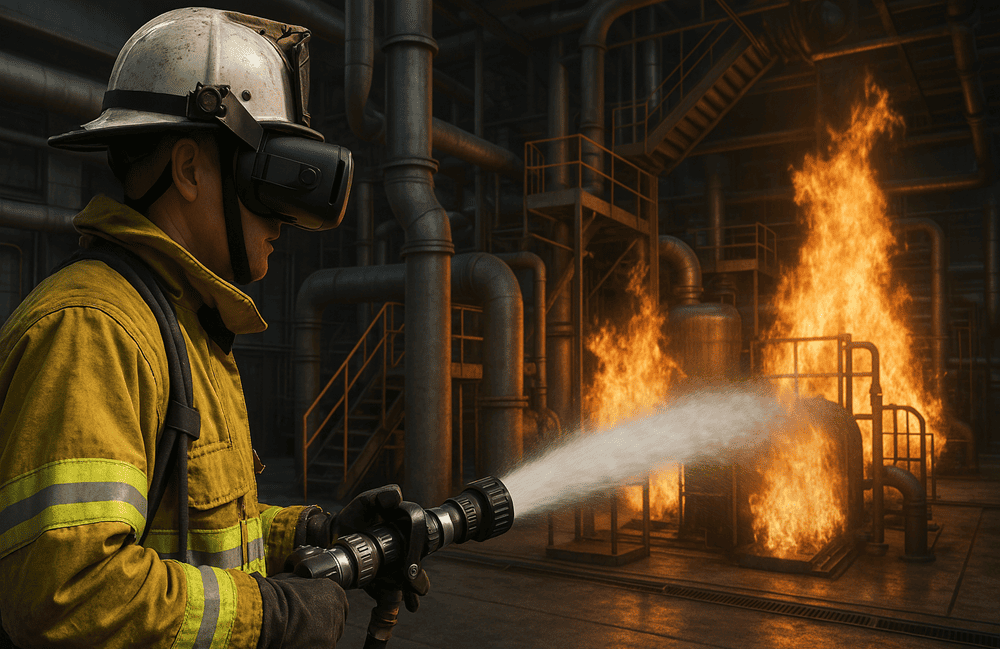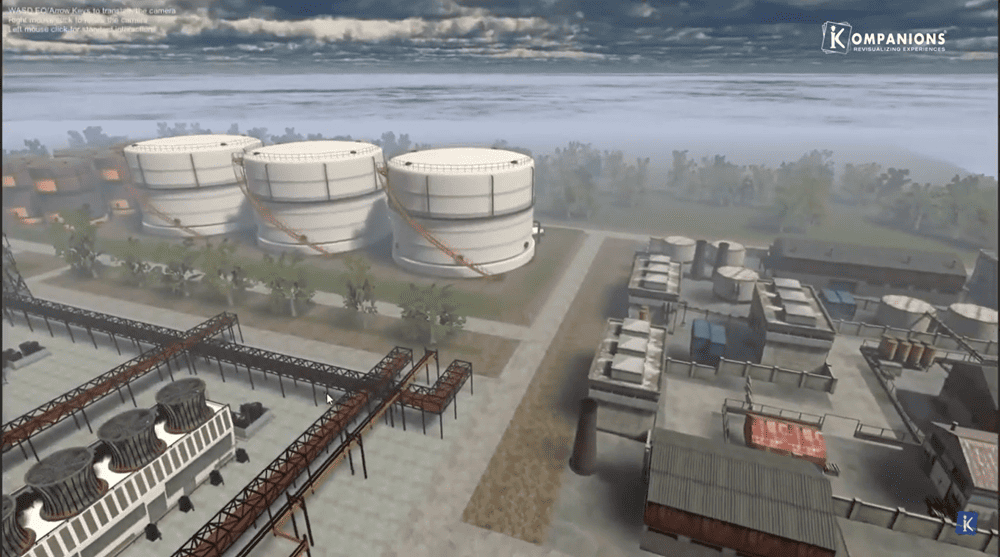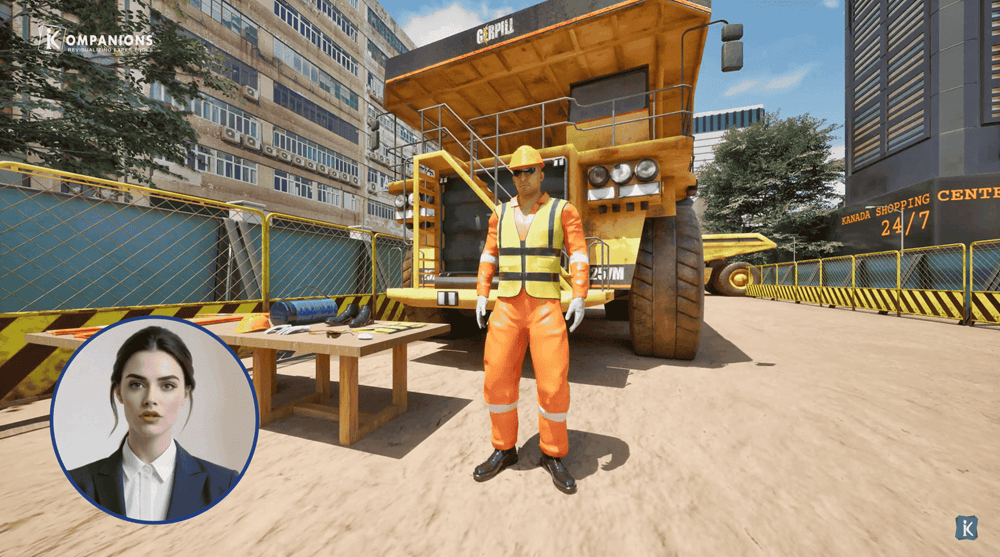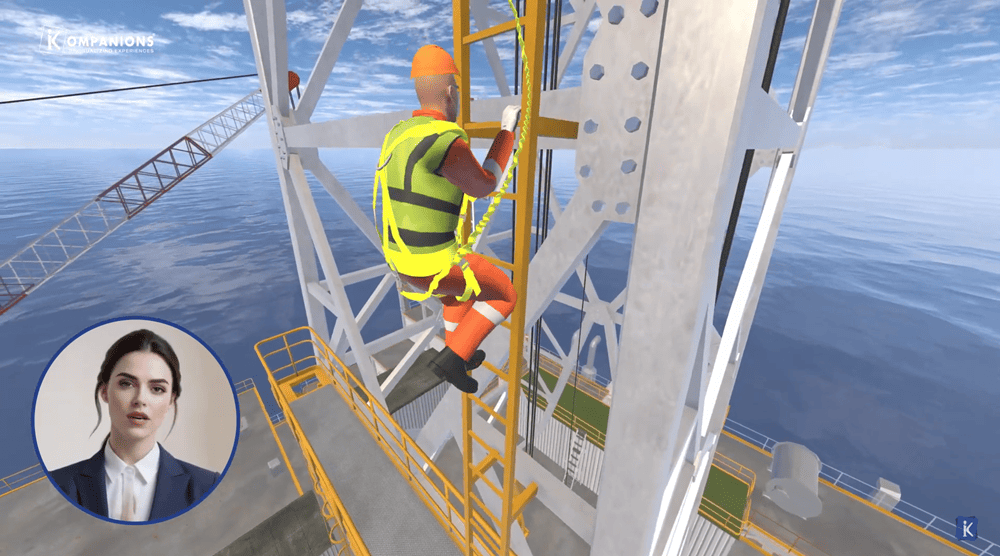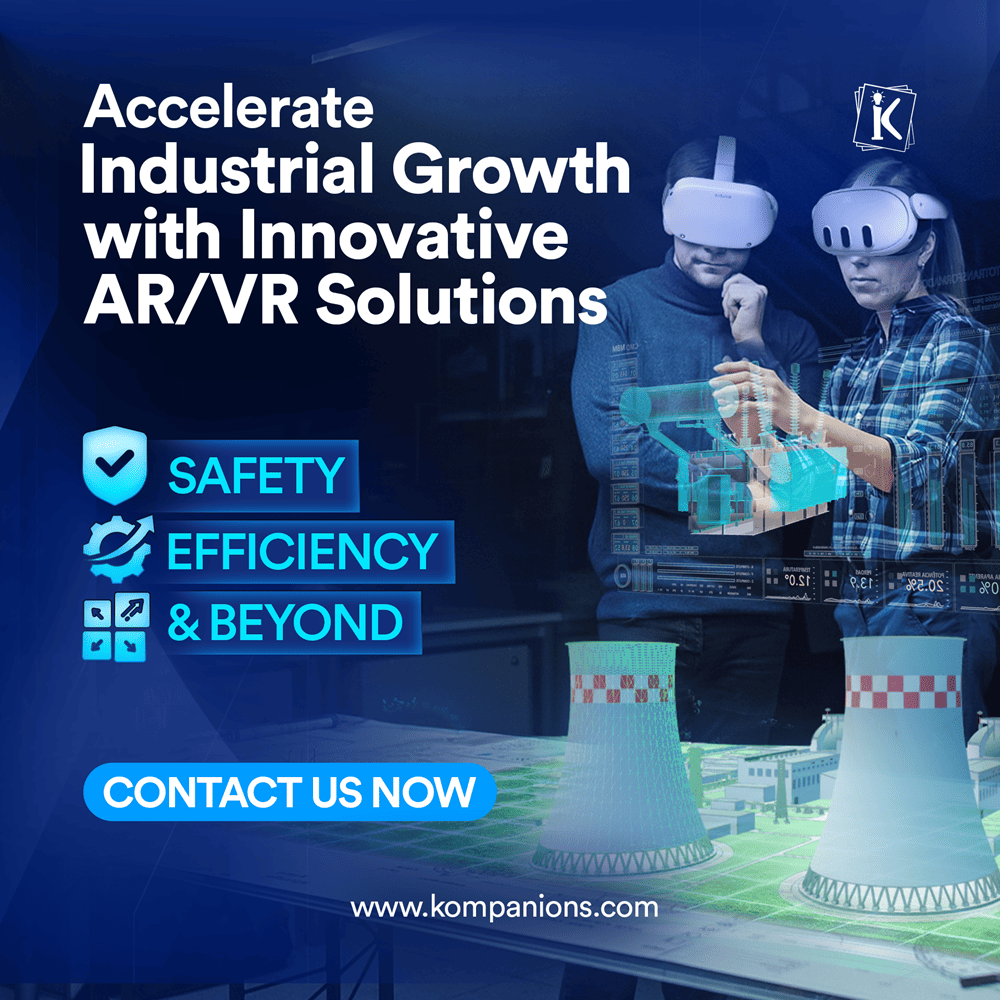AR in Manufacturing Benefits, Use Cases, and Examples
With rapid tech evolution, AR is becoming key in several industries. It has already made a mark in manufacturing and is likely to reach a market of USD100 billion by 2030. (Source: Custom Market Insights (CMI))
The manufacturing process demands accuracy and attention to detail. A small mistake can cause the company to lose money. AR-powered smart glasses can help workers perform tasks better, reduce errors, and improve quality control.
VR and AR solutions aren't widely used yet, and business leaders may not know how these technologies can benefit manufacturing operations. This guide provides benefits, use cases, and examples of AR in manufacturing.
What is AR in Manufacturing?
AR in manufacturing adds digital information to the real world, helping workers with training, repairs, and quality checks. It gives step-by-step guidance, reduces mistakes, improves safety, and makes production faster and more efficient.
Benefits of Augmented Reality in Manufacturing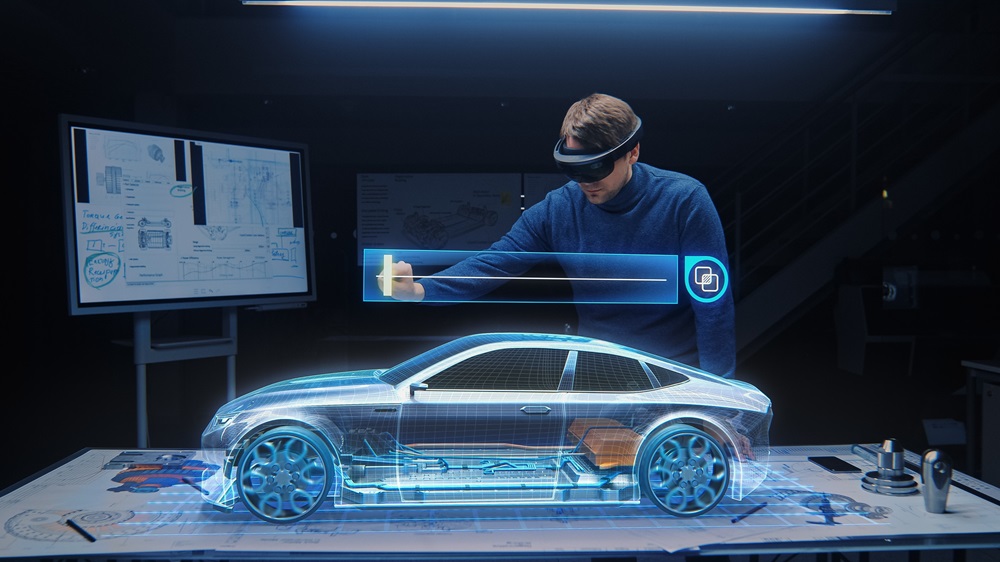
Several manufacturers and industries are implementing augmented reality. It improves efficiency by quickly reducing downtime, finding problems, and keeping processes moving.Here are some key benefits of AR in industrial and manufacturing settings:
1. Enhanced productivity
AR enables workers to complete tasks much faster and more accurately. It also helps to cut task time, boost productivity, and reduce machinery costs.
2. Better product development
Using AR in manufacturing will save you money. It will cut travel costs, expert accommodation, and on-site visit fees. It also helps you save costs on unplanned downtimes through regular MROs and internal audits.
3. Simplified processes
Visualized workflows with step-by-step instructions can help. AR supports predictive troubleshooting and reduces mistakes that cause rework. It also speeds up complex assembly tasks for workers.
4. Streamlined warehouse management
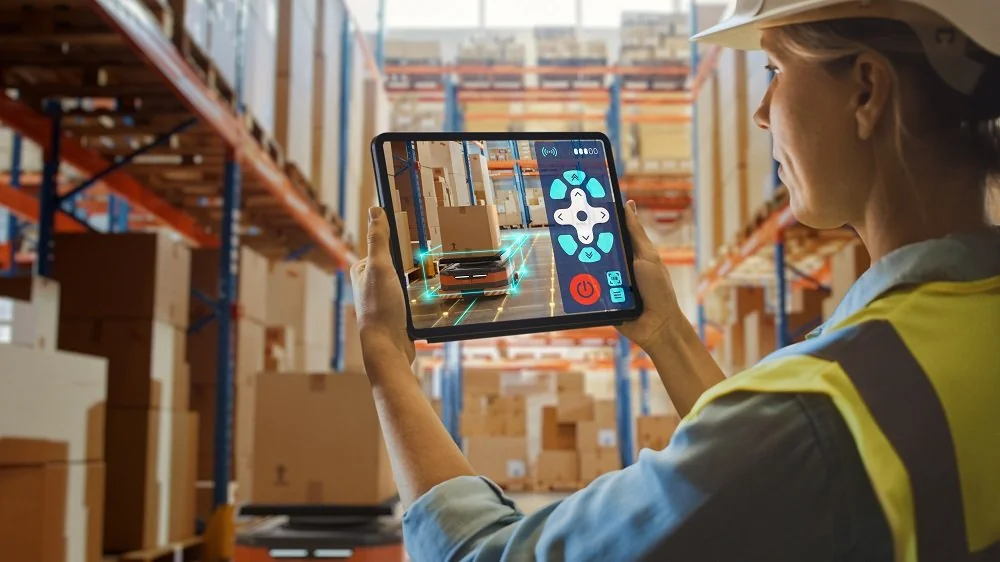 AR can save time by managing inventory, guiding product picking, and cutting downtime. It can also help technicians diagnose and fix problems and enhance employee training.
AR can save time by managing inventory, guiding product picking, and cutting downtime. It can also help technicians diagnose and fix problems and enhance employee training.
5. Increased worker engagement
AR is a new technology. Its 3D, immersive experience and virtual learning are still novel. This boosts workers' engagement with their tasks.
6. Reduced risk
AR doesn't just replace real equipment and people. It also creates a safe, experiential learning environment. It lets workers practice tasks virtually, without risk, improving worker safety, inspection, training, and workflow.
Use Cases of Augmented Reality in Manufacturing
Augmented reality is transforming manufacturing by improving efficiency, precision, and training. From assembly assistance to quality control, AR streamlines operations and enhances worker productivity across various stages of production.
1. AR in Car Manufacturing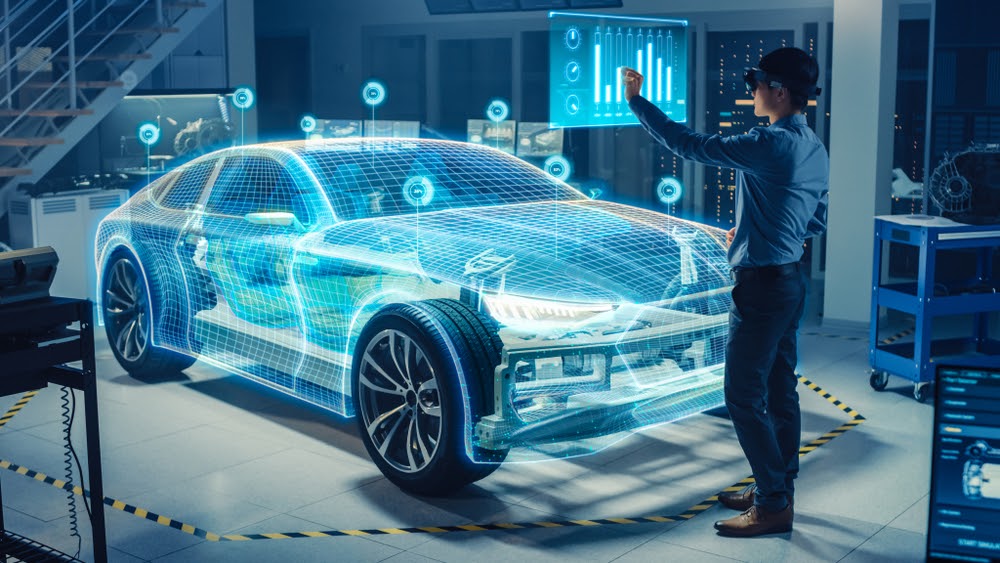
The car industry is using augmented reality (AR) for design, assembly, and maintenance. Automakers like BMW and Ford use AR to streamline production and enhance quality control.
2. Augmented Reality Factory Applications
AR factory setups enable real-time monitoring of production lines, allowing workers and managers to visualize machine performance, detect issues early, and optimize workflows.
This ensures smooth manufacturing operations, reduces downtime through predictive maintenance, and enhances worker safety by providing hands-free, on-the-spot guidance and troubleshooting.
3. Digital Twins and BIM for Manufacturing and Construction
Using BIM and digital twins for construction, companies create highly detailed virtual replicas of machines, equipment, and infrastructure.
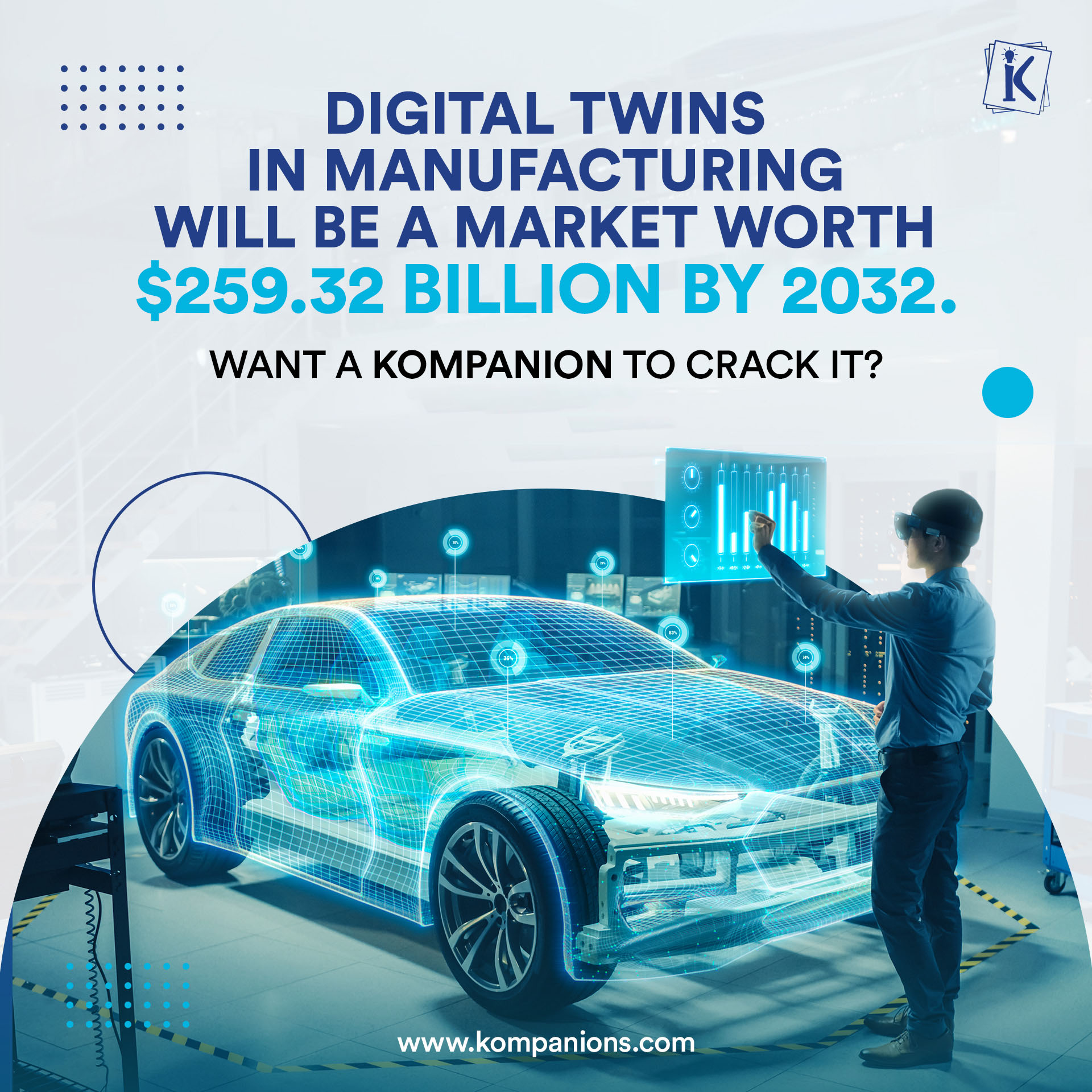
These digital models enable real-time performance monitoring, streamline design processes, and support predictive maintenance, reducing costs and minimizing risks associated with operational inefficiencies and unexpected failures.
Additionally, integrating VR in construction allows stakeholders to immerse themselves in these virtual environments, enhancing project visualization, improving design accuracy, and facilitating better decision-making through interactive simulations and virtual walkthroughs.
4. Augmented Reality in Pharma Manufacturing
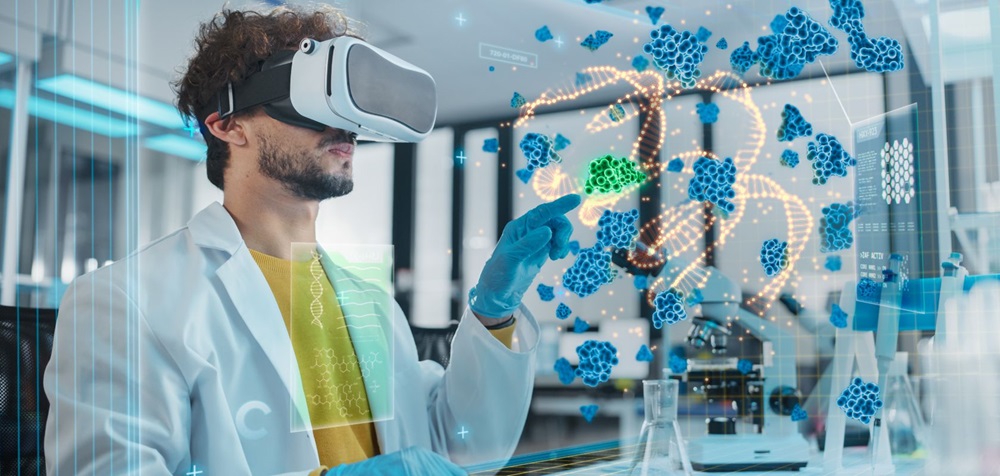 AR in pharma manufacturing is enhancing drug formulation, precise tracking, and employee training in controlled environments like cleanrooms.
AR in pharma manufacturing is enhancing drug formulation, precise tracking, and employee training in controlled environments like cleanrooms.
By overlaying digital information onto real-world processes, AR helps maintain compliance, reduce errors, and improve efficiency in highly regulated pharmaceutical production and research facilities.
Real-Life Examples
Some of the real-life experiences from the manufacturing sector using Augmented reality solutions include:
1. Airbus utilizes Microsoft HoloLens 2 AR glasses to guide workers in assembly tasks. These glasses show visual data points and simplify complex assembly tasks with step-by-step instructions.
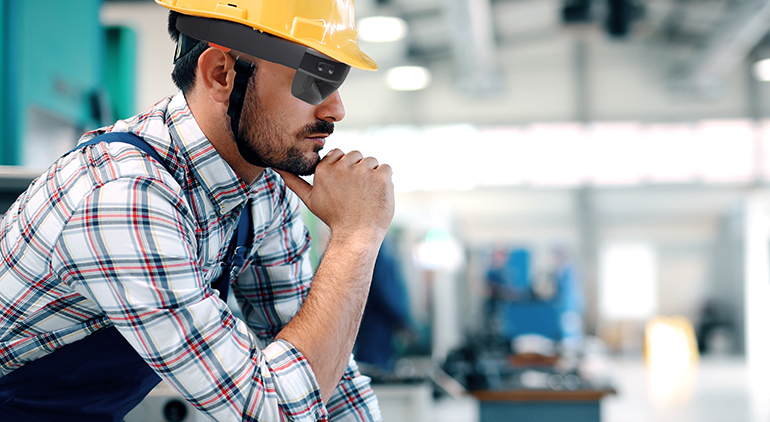 2. Taqtile's mobile AR solution, Manifest, improves quality inspections. It gives workers step-by-step visual instructions in their field of view, ensuring standardized procedures and reducing errors.
2. Taqtile's mobile AR solution, Manifest, improves quality inspections. It gives workers step-by-step visual instructions in their field of view, ensuring standardized procedures and reducing errors.
The platform lets you report faults in real time. It can automatically capture data and connect you with experts, making it easier to handle and record issues during inspections.
3. Vuforia's AR solutions improve maintenance and repair tasks. They give techs real-time, in-context guidance. Vuforia overlays 3D work instructions onto equipment.
This helps technicians perform complex procedures accurately and efficiently. This method reduces reliance on manuals, speeds up repairs, and improves first-time fix rates.
Unlock the power of AR to streamline your manufacturing, reduce errors, and boost productivity. Learn how to transform your operations
Contact Us4. PBC Linear uses augmented reality (AR) to improve training in advanced manufacturing. It provides workers with interactive, step-by-step instructions via Taqtile's Manifest platform. This lets PBC Linear turn expert knowledge into digital guides, reducing training time and ensuring consistency in processes.
With AR, new employees can follow visual instructions in their workspace. This makes it easier to learn tasks accurately without needing much oversight.
5. SMA Solar Technology AG boosts customer support with AR apps, including the SMA Remote and SMA Virtual Support apps.
The Future of AR in Manufacturing
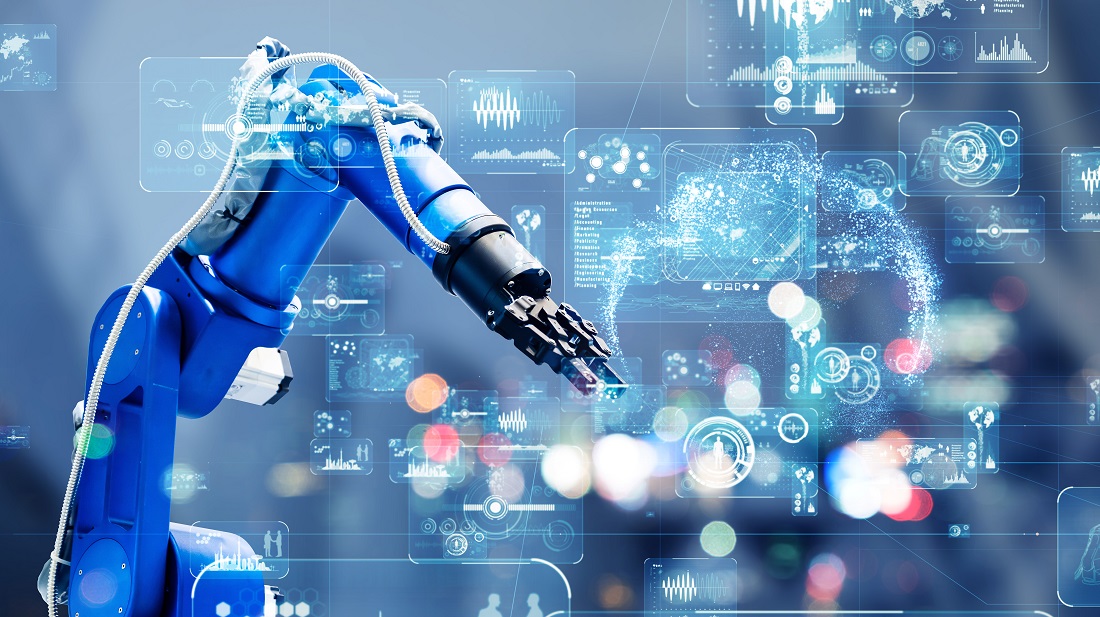
The AR in the manufacturing industry is set to grow exponentially. AI, IoT, and 5G will boost AR's impact. It will improve efficiency, safety, and innovation in manufacturing.
AR investments today will give manufacturers a competitive edge, improve efficiency, and drive innovation. AR is shaping the future of industrial production, including both manufacturing and real-world applications.
Conclusion
The implementation of AR in manufacturing is transforming traditional production processes. AR is a game-changer in many sectors. It is helping with everything from manufacturing training to car manufacturing.
AR technology boosts efficiency, cuts costs, and improves worker safety for companies. As technology improves, we can expect more creative AR in manufacturing. These innovations will continue to change the industry.
Are you ready to integrate AR into your manufacturing processes? Join hands with Kompanions to embrace the future now!

